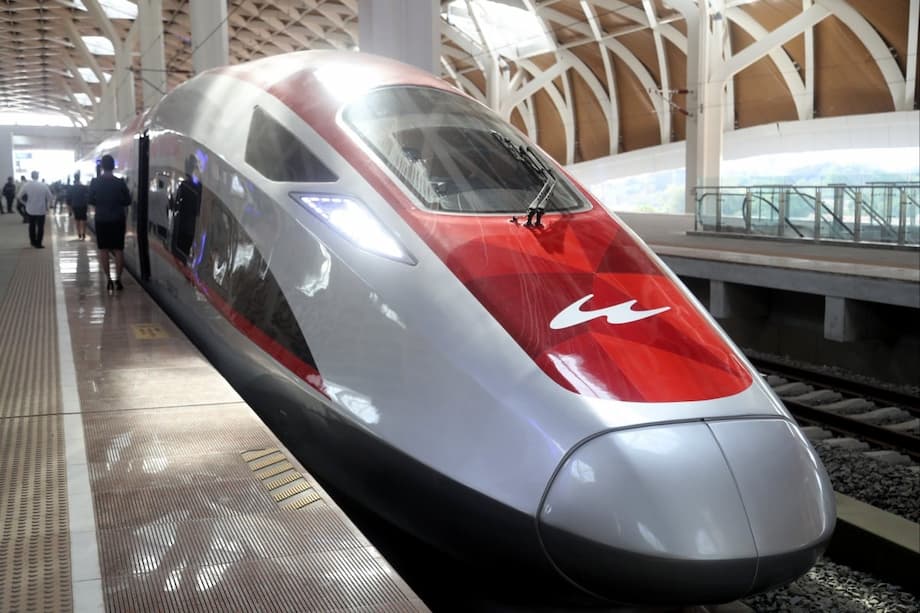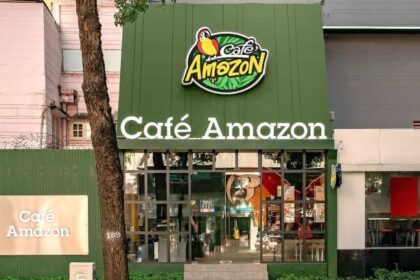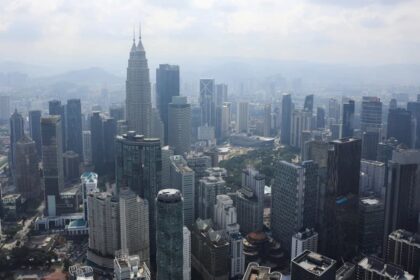Why Indonesia wants more rail, and why debt is back in focus
On Bali, where traffic clogs narrow streets from Kuta to Denpasar, the promise of an urban rail line feels like relief in waiting. A 60 kilometer subway plan has captured imaginations on the resort island, not only as a fix for gridlock but as a sign that Indonesia can knit its vast archipelago together with modern transit. Many Indonesians expect China to play a central role in that build out. That expectation is grounded in experience: China helped deliver the country’s first true high speed service on Java, known locally as Whoosh.
- Why Indonesia wants more rail, and why debt is back in focus
- How the Jakarta to Bandung line was financed
- The bill comes due: ridership, revenues, and mounting losses
- Inside the debt talks with China
- Bali’s urban subway and local hopes
- Are debt trap fears warranted
- What would make Whoosh sustainable
- Extension to Surabaya: vision versus viability
- At a Glance
Whoosh, which began commercial service in October 2023, now whisks passengers from Jakarta to Bandung in around 40 to 45 minutes. By car, the same trip can stretch to three hours or more. The line is only two years old, yet it has already carried millions of passengers and has operated without major technical incidents. Enthusiasm for faster travel is clear. Anxiety about the project’s debt burden and ticket affordability is just as visible.
The tension between ambition and arithmetic sits at the heart of Indonesia’s next round of decisions. Officials are courting more rail investment, including a potential extension of Whoosh from Jakarta toward Surabaya and the planned Bali Urban Subway, while they negotiate with Chinese counterparts and lenders over how to reshape Whoosh’s finances. The outcome of those talks will shape what gets built next and who pays for it.
How the Jakarta to Bandung line was financed
Whoosh is the product of a government to government partnership, corporate joint ventures, and large loans. In 2015, Jakarta chose a Chinese proposal over a Japanese bid to build the Jakarta to Bandung corridor. The decision turned on financing and delivery promises. China agreed to fund most of the construction through the government owned China Development Bank while Indonesian and Chinese state companies formed a special purpose company to build and operate the line.
The construction budget rose over time. The initial estimate of roughly 6 billion US dollars climbed after land acquisition obstacles and pandemic delays. By 2023, Indonesia and China had agreed that the final cost increase would be about 1.2 billion US dollars, bringing the total project value to around 7.27 billion US dollars.
Loan terms matter in a project of this size. About 75 percent of the original cost was financed with a loan package near 4.5 to 4.6 billion US dollars that carried an annual interest rate close to 2 percent. The additional borrowing to cover the escalation came with a higher rate, around 3.4 percent. Those differences add up across years, which is one reason restructuring is on the table now.
Who owns and runs the project
Operations and ownership sit with PT Kereta Cepat Indonesia China, or KCIC. This Jakarta based company is a joint venture. The Indonesian side, a consortium known as PT Pilar Sinergi BUMN Indonesia, holds a 60 percent stake. Its shareholders include state railway operator Kereta Api Indonesia, the builder Wijaya Karya, toll road operator Jasa Marga, and plantation firm PTPN VIII. The Chinese side controls 40 percent through a group headed by China Railway International with partners from China’s rail construction, rolling stock, and signaling firms. KCIC is responsible for the trains, stations, and day to day service.
The bill comes due: ridership, revenues, and mounting losses
Ridership is growing, yet ticket income has not kept pace with operating costs and debt service. KCIC reported carrying about 2.9 million passengers in the first half of 2025, an increase over the same period a year earlier. Daily volumes typically run between twenty thousand and thirty thousand riders. That is meaningful demand for a new premium service, but it still trails the most optimistic forecasts that were used to model early revenue.
Losses have followed. The Indonesian consortium that backs KCIC booked an estimated 4.2 trillion rupiah loss in 2024 and about 1.6 trillion rupiah more in the first half of 2025. Kereta Api Indonesia, the largest shareholder on the Indonesian side, absorbed roughly 951 billion rupiah of that mid year deficit. Executives and lawmakers have been blunt that the current financial structure is too tight for the level of ridership achieved so far.
During a hearing at the House of Representatives in August, Kereta Api Indonesia’s president director, Bobby Rasyidin, warned legislators that the situation required urgent attention.
He framed the risk in stark terms before the commission that oversees state companies and investment policy. He described the need to work with Indonesia’s sovereign investment manager to reshape the debt and protect the railway’s broader portfolio from strain.
The issue with Whoosh is a ticking time bomb. We will coordinate with Danantara to restructure KCIC debts and rebalance our portfolio.
Some lawmakers argued the project’s early ridership missed both optimistic and conservative planning cases, which magnified the financial stress. Others urged the government to separate public service obligations from the balance sheets of operating companies so that the national railway is not exposed to prolonged losses from a strategic project.
Inside the debt talks with China
The government has opened negotiations with Chinese counterparts on a comprehensive fix to Whoosh’s liabilities. Indonesia’s sovereign investment manager, Danantara, is now leading those talks with the National Development and Reform Commission in Beijing and with lenders, including China Development Bank. The goal is to ease short and medium term pressure on KCIC and its Indonesian shareholders without transferring the burden to the state budget.
Two options dominate the Indonesian side’s plan. One is a capital injection that would give KCIC more equity, reduce its reliance on debt service from tickets alone, and put it on a path to healthier cash flows. The other is to transfer the infrastructure to the state, while leaving operations under a concession, which would move high fixed costs off the project company’s books and align Whoosh with how other public rail assets are managed.
Indonesia’s investment minister, Rosan Roeslani, said the direction is broader than a simple rescheduling of payments. He described a solution that reduces default risk and cleans up the project’s balance sheet so it can support service expansions and extensions over time.
After outlining the intention for a full reset of obligations, he stressed that the talks were designed to deliver durability rather than stopgap relief.
The goal is comprehensive reform so that after restructuring there will be no more risks such as the possibility of default in the future.
Finance officials have also been clear about who should shoulder the work. Finance Minister Purbaya Yudhi Sadewa said the responsibility to fix the debt sits with Danantara, not the state treasury, because the fund consolidates state owned enterprise holdings and collects substantial annual dividends that can be deployed to stabilize strategic assets.
He suggested that Danantara can manage Whoosh’s liabilities using its own resources and cash flow, without adding to the national budget’s obligations.
KCIC is under Danantara and they have their own management and dividend streams. The issue can be resolved through Danantara’s dividends without burdening the state fiscally.
Other tools remain on the table in talks with lenders: lower interest rates on the cost escalation loan, a longer grace period, an extended maturity profile, and better alignment between debt service and seasonal ridership patterns. Indonesia is also pressing for governance clarity and operating rules that reduce uncertainty for KCIC’s management and for its Indonesian shareholders.
Bali’s urban subway and local hopes
Interest in new rail is not confined to Java. Bali’s leaders are working with Chinese partners on what has been described as an urban subway concept stretching roughly 60 kilometers. The venture is in early stages, with planning and initial works valued at about 20 million US dollars and a first line expected in the early 2030s if timelines hold. Even preliminary movement has captured attention on the island, where tourism, logistics, and everyday errands all compete for limited road space.
For residents who live the traffic every day, the appeal is obvious. Surfing instructor Amri Anjulius has spent sixteen years navigating Bali’s bottlenecks and says the island needs the subway as much as tourists need the beaches. He sees China’s involvement as almost a given, based on Indonesia’s recent experience on Java.
After explaining how life and work depend on travel times that stretch and shrink with traffic, he offered a succinct view of how projects of this scale get decided in Indonesia.
You ask the government and if they say it is China, then it is China. I think these projects are for China.
Whether that line opens on time and at a usable fare will depend on the lessons drawn from Whoosh. Decision makers say they want to take what worked technically on Java and pair it with a more durable financial model before moving to construction in Bali.
Are debt trap fears warranted
China’s role in major infrastructure has sparked debates around the world about so called debt traps. The phrase conjures images of opaque contracts and collateral seizures, often pointing to cases like Sri Lanka’s Hambantota Port or the financing of Uganda’s airport expansion. Many independent researchers argue that the debt trap narrative oversimplifies complex local decisions and fiscal management challenges. It is still true that large projects with high fixed costs present real fiscal risks if forecasts miss.
Whoosh fits that pattern. The loans are sizable, the interest costs are material, and the early ridership has not yet filled the gap between operating expenses and debt service. This does not make the project a trap by design. It does mean Indonesia needs to rebalance the capital structure, give the operator time to mature ridership, and build revenue streams beyond tickets. Those steps are common in high speed rail systems worldwide, where farebox income rarely covers all costs in the early years.
Indonesia also keeps national debt at moderate levels compared with many peers, supported by legal limits on budget deficits. That policy cushion gives the country room to manage large projects if they are kept off the central government’s balance sheet and supervised through a disciplined investment manager. The current approach, with Danantara at the center and lenders at the table, is meant to do precisely that.
What would make Whoosh sustainable
High speed rail thrives when it is more than a fast train. The corridor must connect smoothly to airports, metros, commuter trains, and buses. Stations should anchor new housing, offices, universities, and shopping districts. That is the core of transit oriented development. Whoosh has begun to catalyze projects around its stations in Bandung and the outskirts of Jakarta, but the scale remains modest. Bigger gains will come if regional governments zone land for dense mixed use near the platforms and invite private developers to co invest.
Finances also improve when rail owners can capture some of the land value created by faster access. That can take the form of joint ventures around stations, long leases of state land, or tax sharing arrangements. Such mechanisms help reduce the burden on tickets alone. Indonesia has used versions of these tools in urban rail, and a wider application around Whoosh would align with global practice.
Pricing and product design matter. A broader menu of fares, including off peak discounts and integrated tickets with commuter lines, can fill more seats without raising average subsidies. Better last mile links, such as frequent shuttle buses and seamless transfers to Jakarta’s LRT, MRT, and commuter rail, can turn a fast line into a door to door timesaver. Reliable schedules and intuitive wayfinding at Halim and Tegalluar stations build trust, which is the fuel of ridership growth.
On the capital side, a rebalanced mix of lower cost debt and fresh equity would let KCIC invest in service quality and growth rather than spending every spare rupiah on interest. Currency risk hedges can limit exposure if revenues are in rupiah and some debt remains in dollars or yuan. Governance clarity, including simple decision rules between Indonesian and Chinese partners, can cut delays and keep costs from creeping upward again.
Extension to Surabaya: vision versus viability
President Prabowo Subianto has signaled support for extending high speed service from Jakarta toward Surabaya, Indonesia’s second largest city. Legal preparations are under way. The idea promises to link multiple growth centers along Java’s spine and could generate more riders than the shorter Jakarta to Bandung segment. The appeal is real. The risks are just as real if the expansion outpaces the financial reset of the first line.
Negotiators say any decision on an extension should lock in governance, finance, and land development arrangements before groundbreaking. That includes defining who pays for what, how much of the construction cost will be debt versus equity, what interest rates apply, and who has authority to plan and capture value around stations. The talks underway this month are designed to answer those questions while maintaining constructive ties with China as a lender and technical partner. Indonesia’s position is stronger if the first line’s operator is stable and its ownership is clear.
Technical issues also need early resolution. Some Whoosh stations opened in stages, signaling systems needed adjustments, and integration with surrounding urban areas lagged the rail opening. A larger corridor will magnify those issues if they are not addressed in the planning phase. The upside is significant if the lessons transfer: more mobility, shorter travel times, and new development along the route.
At a Glance
- Whoosh links Jakarta and Bandung in about 40 to 45 minutes on a 142 kilometer corridor, serving tens of thousands of passengers daily.
- The project cost stands near 7.27 billion US dollars, with roughly 75 percent financed by loans from China Development Bank.
- Cost increases of about 1.2 billion US dollars were funded at a higher interest rate, putting extra pressure on early cash flows.
- KCIC and its Indonesian shareholders recorded losses in 2024 and the first half of 2025 as ticket revenue did not cover operating and financing costs.
- Danantara is negotiating with Chinese counterparts on a comprehensive restructuring that could combine lower interest, longer maturities, and fresh equity.
- Two main options are on the table: inject new capital so KCIC can be self sustaining, or transfer infrastructure to the state while keeping operations under concession.
- Finance officials say the responsibility to fix the debt rests with Danantara, not the state budget, given the fund’s dividend income and control of state enterprise assets.
- Bali is pursuing an urban subway plan with Chinese partners, with early works valued at about 20 million US dollars and a first line targeted for the early 2030s.
- Debt trap fears are widely debated, but the central issue for Indonesia is practical: rebalance Whoosh’s finances, grow ridership, and capture station area value.
- Any extension toward Surabaya will hinge on locking in governance, financing, and land development rules before construction begins.












